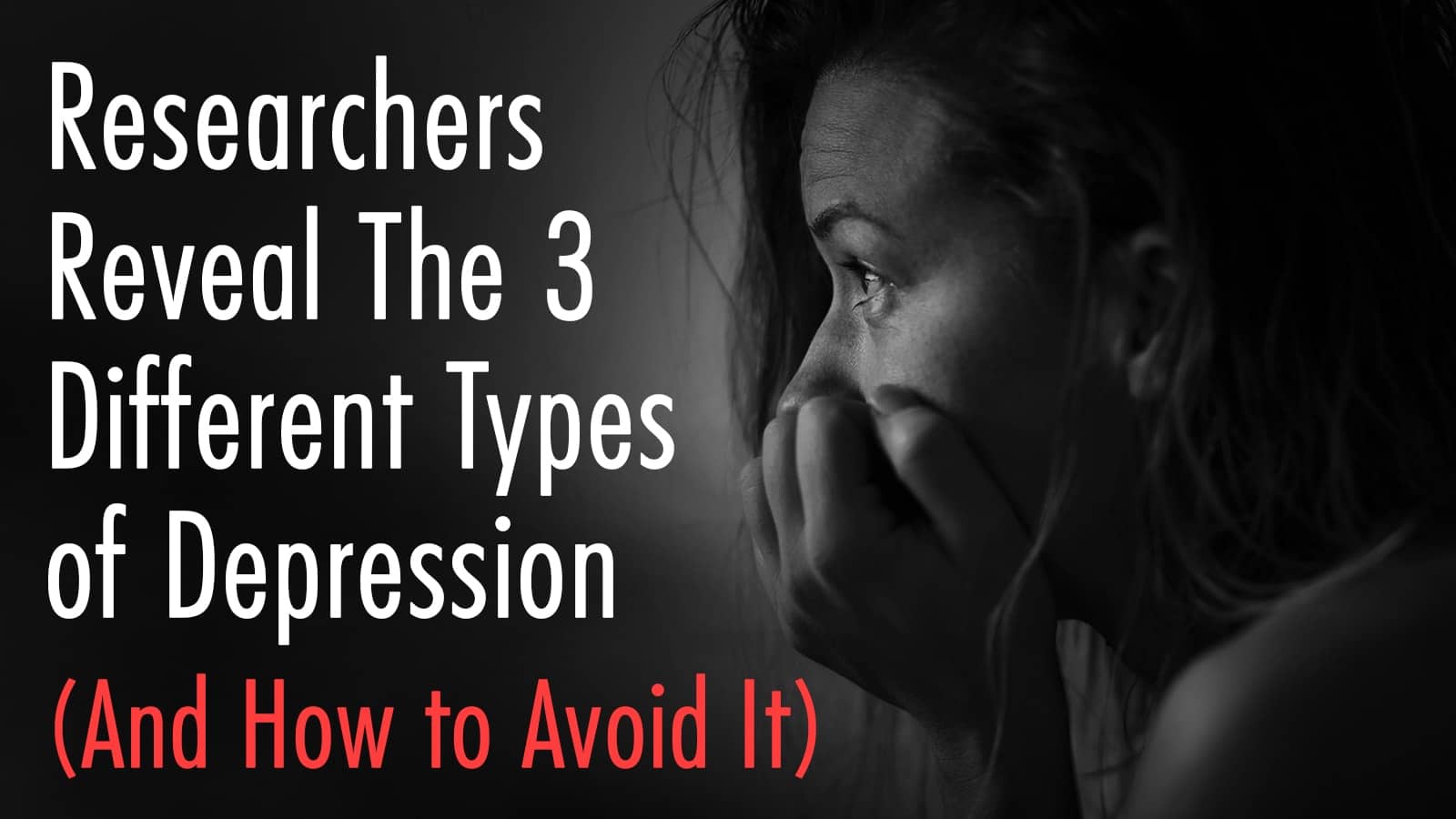Millions of people globally suffer from various mental illnesses, with the most common being anxiety and depression. Researchers from the University of Queensland performed the most comprehensive study to date about anxiety and types of depression. The journal Psychological Medicine published the results. After analyzing surveys from 91 different countries including more than 480,000 people, they concluded that 1 in 13 people globally suffers from anxiety. Additionally, 1 in 21 people will have major depression at some point in their life.
While anxiety seems to be more common than depression, depression carries a much higher risk of suicide. It’s estimated that up to 70% of suicide victims have major depression or bipolar disorder. Depression is a complex disorder caused by a variety of factors such as genetics, environmental stressors, childhood trauma, imbalanced brain chemicals, lifestyle, and economic status, to name a few.
New findings about depression surface often as scientists look for answers. Researchers from the Okinawa Institute of Science and Technology Graduate University and Department of Psychiatry and Neurosciences, Hiroshima University recently discovered there are three subtypes of depression.
We’ll go over the different types of depression below, as well as ways you can manage or prevent it.
Depression is diagnosed when an individual experiences five or more of the following symptoms in a 2-week period. One of the symptoms should be either (1) depressed mood or (2) loss of interest or pleasure.
Depression DSM-5 Diagnostic Criteria
- Depressed mood almost every day for most of the day.
2. Loss of interest or pleasure in activities
3. Significant weight change or change in appetite
4. Slowed speech and movement observable by others, not just subjective feelings
5. Fatigue or loss of energy most days of the week
6. Feelings of worthlessness or guilt
7. Extreme difficulty maintaining concentration, indecisiveness
8. Frequent thoughts of death or suicide, or has a suicide plan
9. Sleeping too much or too little
Other possible symptoms of depression: decrease in self-esteem, pessimistic thoughts, anger, ideas of self-harm.
To be diagnosed with depression, these symptoms must cause significant impairment in a person’s life and severely impact daily functioning. They also must not be caused by another medical condition or substance abuse.
Because of the various symptoms of depression and the fact that medications such as selective serotonin reuptake inhibitors (SSRIs) don’t help all patients with depression, scientists now believe that there are different types of depression. The problem with diagnosing depression, however, is that it’s very subjective and is based on questionnaires given to patients about their symptoms.
Scientists are now looking at specific biomarkers for depression by studying neural activities in the brain. Identifying the types of depression using observable data might help with future treatment options that are better tailored to specific disorders.
The Study on Types of Depression
“It has always been speculated that different types of depression exist, and they influence the effectiveness of the drug. But there has been no consensus,” Professor Kenji Doya said in a statement.
Doya and his colleagues set out to find as much observable data as they could about major depressive disorder. For the study, the scientists gathered data from 134 individuals – half of whom had major depressive disorder while the other half had no depression. They used questionnaires and blood tests. Participants answered questions about things like their sleeping patterns, stresses in life, and any other mental disorders.
Researchers also performed functional MRI scans to analyze brain activity in different regions. They scanned 78 regions of the brain to study how different areas reacted and if there was any correlation. “This is the first study to identify depression sub-types from life history and MRI data,” says Professor Doya.
With over 3,000 measurable features, including whether or not participants had endured childhood trauma, the scientists had to figure out how to analyze such a large set of data. “The major challenge in this study was to develop a statistical tool that could extract relevant information for clustering similar subjects together,” says Dr. Tomoki Tokuda, a statistician and lead author of the study.
Three Sub-types of Depression
He therefore designed a new statistical method that would reveal clusters corresponding to three different types of depression. The three sub-types of depression were characterized by two main factors: functional connectivity patterns synchronized between different areas of the brain and whether a patient experienced childhood trauma or not. They found that the brain’s functional connectivity between the right angular gyrus – a brain region associated with processing language and numbers, spatial cognition, attention, and aspects of self-awareness – played a large role in determining the effectiveness of SSRIs in treating depression.
The researchers found that patients who had increased angular gyrus connectivity as well as childhood trauma did not respond well to SSRIs. However, the other two types of depression – where the participants’ brains did not show increased functional connectivity or where participants didn’t have a history of childhood trauma – showed a positive response to SSRIs.
This is the first study to identify different types of depression based on the response to SSRIs using measurable data such as MRIs and blood tests. “It provides scientists studying neurobiological aspects of depression a promising direction in which to pursue their research,” says Doya. He and his research team hope that this study will help mental health professionals better diagnose and treat individuals with depression in the future.
Now that you know about the different types of depression, we’ll go over some ways to avoid it, or at least manage your symptoms effectively.
How to Avoid the Types of Depression
-
Get enough sleep.
Sleep affects every single function in our body, because sleep helps our bodies “reset” for the following day. Multiple studies have shown that poor sleep results in decreased functioning and mood. Short-term effects of sleep deprivation include irritability and increased stress. In the long-term, a lack of quality sleep can lead to severe mental disorders.
According to a study published in Biological Psychiatry, between 15%-20% of people with insomnia will later develop major depression. So, it’s vital to your mental and emotional well-being to make sleep a priority. Shut off electronics a couple hours before bed and try to stick to a regular sleep schedule.
-
Exercise
In an article for the American Psychological Association, James Blumenthal, a clinical psychologist at Duke University, stated, “There’s good epidemiological data to suggest that active people are less depressed than inactive people.” Exercise releases feel-good chemicals that relieve anxiety and depression, so make sure to get in at least three or four moderate-intensity workouts per week.
-
Follow your heart
While following your dreams may come with a lot of setbacks, nothing worth having in life comes easy. Following your true passions in life will give your life meaning and purpose. It will help you wake up every day excited and ready to face the challenges ahead of you. If you’ve always wanted to travel the country, make a plan to bring your dreams into reality. If you’ve been wanting to start a photography business, start saving for a camera so you can take that first step.
Plus, having goals in life will ward off depression since you’ll have something to focus on to distract you from your thoughts.
-
Get outside
Recent studies have linked a Vitamin D deficiency to depression. We spend a lot more time indoors than our ancestors did, so we don’t have as much access to this vital nutrient. Vitamin D helps regulate our moods and give us energy. Therefore, try to get at least 15 minutes of sunshine per day. If this isn’t possible, look into light box therapy or take a Vitamin D supplement.
-
Eat healthy and get good fats in your diet
Omega-3 fatty acids are essential for good emotional and physical health. A growing body of research suggests that omega-3 fatty acids may help ward off depression since they play a large role in regulating the central nervous system. Studies show that many people with major depressive disorder have low levels of Omega-3.
However, it’s important to get a wide variety of nutrients in your diet, especially zinc, selenium, folic acid, and antioxidants. All of these have been proven to help ease symptoms of depression. Eat as much fresh food as you can, such as fruits, vegetables, whole grains, nuts, seeds, and lean meats. Also, limit your intake of processed foods.
These are only a few suggestions to ease symptoms of depression. Ultimately, you have to find the right combination of remedies that work for you. Please note that if you have severe depression, see a mental health professional as soon as possible. They will have the best advice on how to treat your condition.
Final thoughts
Research has now shown that there are three types of depression: one influenced by functional connectivity in the brain as well as childhood trauma, one influenced solely by brain activity, and one influenced only by childhood trauma. This groundbreaking discovery about depression could help with future treatments that are more specific to the patient’s type of depression.
There are many natural ways to avoid depression, but these don’t work for everyone. If you feel you need professional help, please don’t hesitate to seek counsel and treatment. There is no shame in getting help for an illness, especially when it comes to mental health disorders.
https://www.youtube.com/watch?v=dDn84WupgBA














 Community
Community

